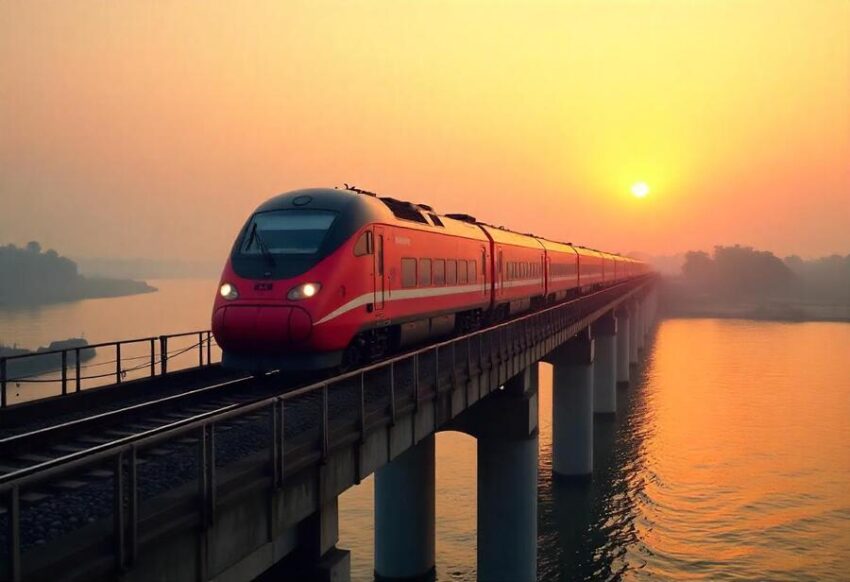Wednesday, May 14, 2025

The high-speed bullet train project connecting Varanasi to Howrah marks a monumental step forward in India’s transportation infrastructure. Designed to drastically reduce travel time, enhance comfort, and promote seamless connectivity across Eastern India, this cutting-edge rail corridor is set to transform the way people travel in the region. The project will provide a significant boost to both the local and national economies by improving access between two major cities and their surrounding areas.
This ambitious project will traverse through key areas in the Jagdishpur block of Bhojpur district, Bihar, which includes several villages that will be affected by land acquisition efforts. The acquisition of both public and private lands is crucial for the construction of the route and the necessary infrastructure. Villages such as Bhatauli, Bimwa, Chakwa, Dawa, Haridiya, Harigaon, Hetampur, Kataibojh, Kaura, Teer, Uttardaha, and Tulsi will be directly impacted. A comprehensive route map has been created to outline the specific land parcels required from each village to facilitate the project.
Land acquisition has officially begun, with a public notice issued by the District Magistrate of Bhojpur to inform local residents about the process. The notice specifies the types and sizes of plots that will be needed and directs officials to begin marking the land. This process involves acquiring both private and government-owned land, ensuring that the project can proceed without disruption. To ensure transparency and fairness, officials are carrying out detailed surveys to collect essential data about the landowners and compile an accurate report for the District Magistrate. A separate list of government-owned plots has also been prepared to facilitate the acquisition.
In addition to land surveys, groundwork is being carried out to prepare the construction site. Officials are physically inspecting the land to evaluate the impact of the project and gather further information about each plot. This groundwork phase is essential for ensuring that the construction can begin promptly and with minimal delays. The detailed surveys and land assessments will also help officials determine the best way to minimize disruption for landowners and local communities.
The bullet train project is poised to be a game-changer for Bihar’s infrastructure development, with Jagdishpur emerging as a vital hub in India’s expanding bullet train network. Once completed, the Jagdishpur station will serve as a key connection point, facilitating rapid travel between Varanasi and Howrah. This will have a transformative effect on regional connectivity, improving transportation options not just for these two cities but for the surrounding towns and villages as well.
Upon its completion, the bullet train will significantly reduce travel time between Varanasi and Howrah, making the journey faster and more efficient for millions of passengers. In addition to easing travel for commuters, the project will open up new opportunities for businesses in the region, providing them with better access to markets, resources, and talent. The improved connectivity will also bolster tourism in the area, attracting both domestic and international visitors and encouraging greater investment in the local economy.
This project is not just about improving transportation; it’s a crucial part of India’s broader effort to modernize its infrastructure and reduce dependence on roadways and air travel. By introducing high-speed rail travel, the project will offer a more sustainable alternative that is both efficient and environmentally friendly. The shift towards rail will alleviate road congestion and reduce carbon emissions, making the transportation system more sustainable in the long run.
The Varanasi to Howrah bullet train is a visionary project that will yield significant benefits for Eastern India, both immediately and in the years to come. The high-speed rail corridor will improve the quality of life for residents, stimulate economic growth, and contribute to India’s ongoing efforts to become a global leader in transportation innovation. By making travel faster, more comfortable, and more sustainable, the project will enhance the country’s competitive edge and ensure its continued development as a modern, connected nation.






